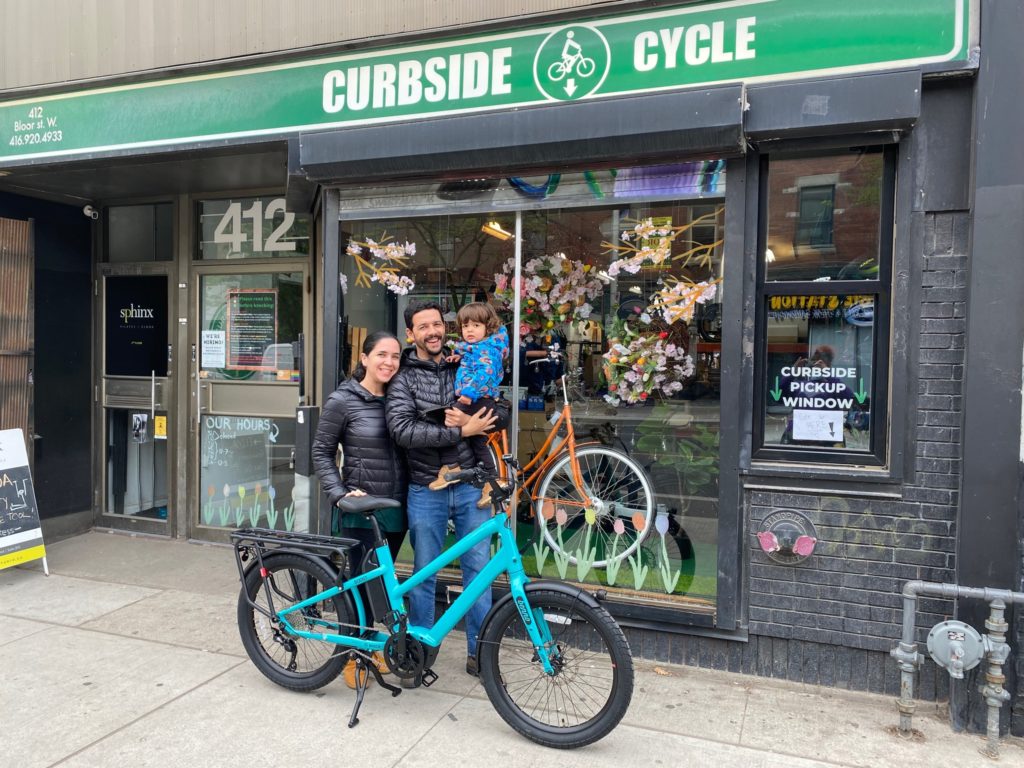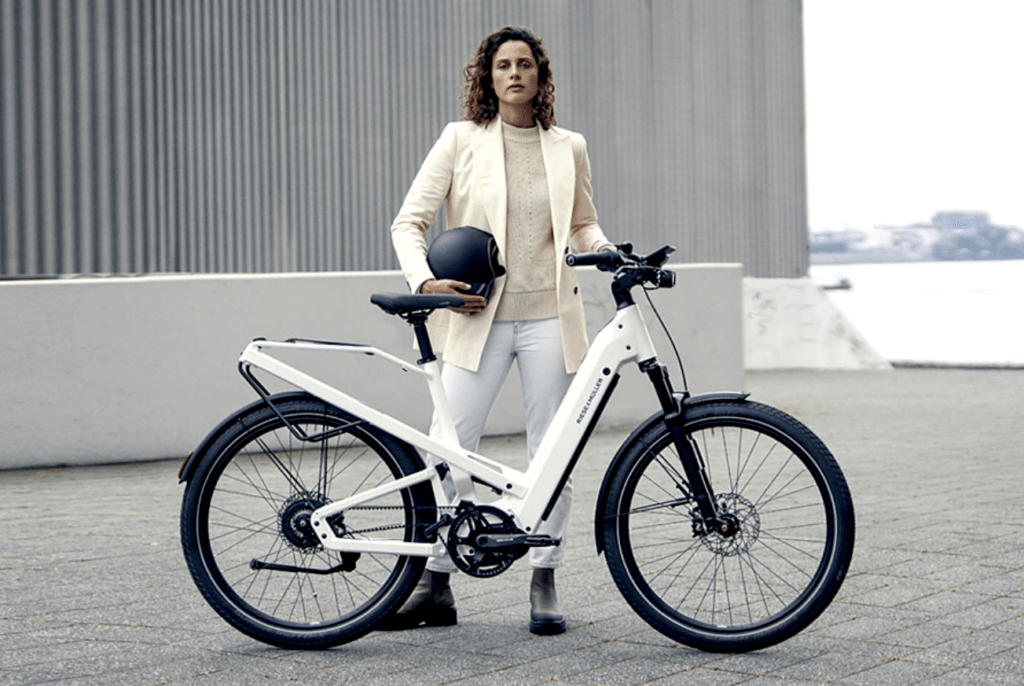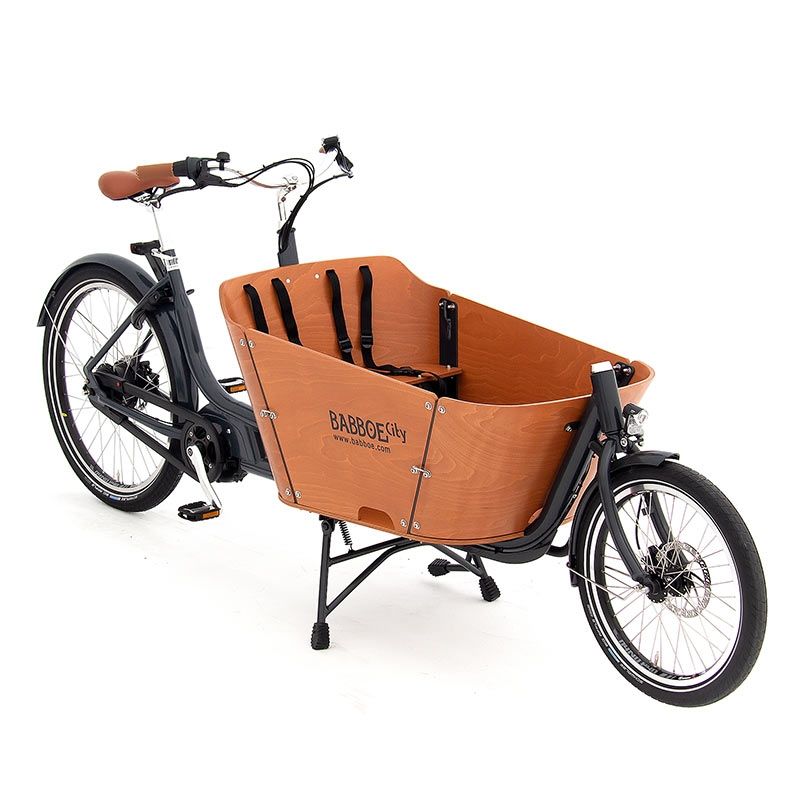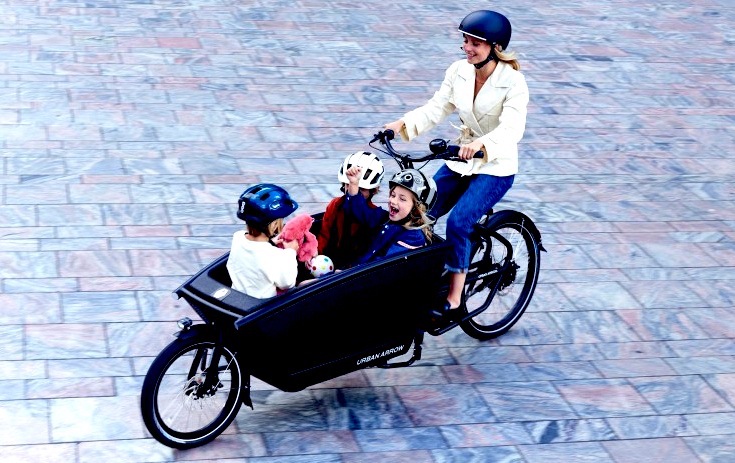
• Flip Book• eNews • eBikes • eAccessories • eCargo • eCities • eAdventures • eBikeTests •

• Flip Book• eNews • eBikes • eAccessories • eCargo • eCities • eAdventures • eBikeTests •

October 19, 2022 - Toronto’s Curbside Cycle has been at the forefront of the cycling mobility movement in Canada and North America for 30 years. With humble roots, unbridled passion and a pioneer spirit, they were the first to import unique European brands including cargo bikes over two decades ago, en route to creating a niche urban specialty market that few can rival. We caught up with Eric Kamphof, Curbside’s General Manager, for a look at the bike shop’s past, present and future.
Please give us a brief history of Curbside Cycle.
Eric Kamphof: Curbside was started by Don Watterson back in 1992 — at least we’re pretty sure that was the year. Unfortunately Don passed away in 2017, but his legacy lives on. It started as a semi-legal tent on the side of a curb, dedicated to Toronto’s highly contrarian Annex neighbourhood that has always been famous for its collective urbanism. The original Curbside tent won the hearts of the Annex, and we grew from there to our first brick-and-mortar location. This advanced to our current location on Bloor St. W, where we really began to find our feet.
Curbside was one of the first bike shops to import unique brands from Europe… how did this come about, and were they well-received?
EK: I came to the store in 2002 and instantly fell in love. The clientele were all city cyclists and split between the sexes. Customers who bought a hybrid bike for city riding needed endless repairs, as these bikes weren’t really city bikes.
My background is Dutch, and we got this crazy idea that maybe we should import Dutch city bikes. But we had to travel there and buy a container of bikes — which was risky as hell, as we were mostly a used bike store. Yet our well-educated and well-travelled Annex customers saw exactly what we were doing, and we sold that container within a month or two. Soon after, we started developing the portfolio of leader brands we have today.
When did Curbside first start selling e-bikes and e-cargo bikes?
EK: Our story is probably different than most bike stores because our e-bike story begins with cargo bikes. Research in Holland shows that e-bikes on their own tend to serve distances greater than 7.5km, and most of our customers live within 7.5km of work and daily errands; but with a cargo bike, even short distances are facilitated by e-assist.
We started importing cargo bikes back in 2007, just before the great recession hit as a massive shift in demographics was taking place. Back then, it was Curbside and Clever Cycles (in Portland, OR) who started importing cargo bikes, laying the groundwork for what we see today.
We began with Babboe from Holland, which was the first brand to figure out how to flat-pack cargo bikes, and this export-ready approach helped sell this new cycling category at reasonable prices. When we started importing the electric version of cargo bikes, it required very little explanation. Today, our chief e-assist market is still cargo bikes, but we do very well with stand-alone e-bikes as well.

What brands and types of e-bikes and e-cargo bikes do you currently stock?
EK: We make a point of thoroughly investigating every brand we import. It needs to be torture-tested in its home market for us to consider importing it. We go to each market, see what brands are being used, observe the condition of bikes parked outside, visit factories, and find the companies that show the greatest leadership and who can support an export market. We started with Babboe and moved from there to Nihola (for a three-wheeled option). Our very first e-assist brand was Urban Arrow, then Bullitt, then Black Iron Horse and Winther, and finally Riese & Müller. Each of these offered different levels of stability and handling, and all offer the same impact-resistant safety for carrying kids. For regular e-bikes, we carry Brompton, GoCycle, Devinci, and Riese and Müller.

How has the recent pandemic impacted things and the e-bike and cargo bike sectors of your business?
EK: Yeah, it’s been pretty crazy. Our revenues doubled in the last two years, but what we’re really happy to see is that our little experiment is working. People used to come into the store and look at a cargo bike with incredulity, but now they ask for cargo bikes by name. The radical shift and increase in infrastructure has obviously helped as well. As awful as Covid has been, it has raised the consciousness for cycling.

Talk about the demographic of your customers in general… and for e-bike and cargo bike sales.
EK: Great question. For cargo bikes, the demographic would be anyone “urban”, someone who lives a majority of their life within 7.5km of home (or 15km in the case of an e-assist). I would say 70% of our buyers are identified as a female parent. For e-bikes, it seems more tilted towards the recreational rider — not sure why. While studies from Holland show that e-bikes are really carving out a space in distances between 7.5km to 15km, we haven’t seen the same demographic here as yet, but we believe it’s coming.
Toronto has expanded its cycling infrastructure i.e., Bloor, Yonge, University with more coming — what’s your perspective?
EK: Yep, it’s been pretty amazing, but we still need more bike lanes! Again, if e-bikes can offer a majority transportation tool to people whose ‘action radius’ is about 15km, then more bike lanes that reach deeper into the suburbs that connect downtown would really help reduce congestion and gridlock for commuters who live relatively close to downtown.
When did you launch Fourth Floor Distribution to provide your unique products to other bike shops across Canada?
EK: We launched Fourth Floor about the same time that we began importing European city bikes and cargo bikes back in 2007. Our mission was always to increase city cycling by offering the proper tools, and it seemed we had access to a wealth of quality European products not sold in North America.
What do you ride?
EK: Like many bike shop people, I am guilty of owning too many bikes. But, for sake of context, I do own a Bullitt e-cargo bike, and it has changed the way I do everything. There’s a certain ergonomics that living in the city requires, and this bike has been a perfect fit. It elevates almost every task – plus, I have lots of fun!
Thanks for your time and all the best.
EK: Thanks as well.